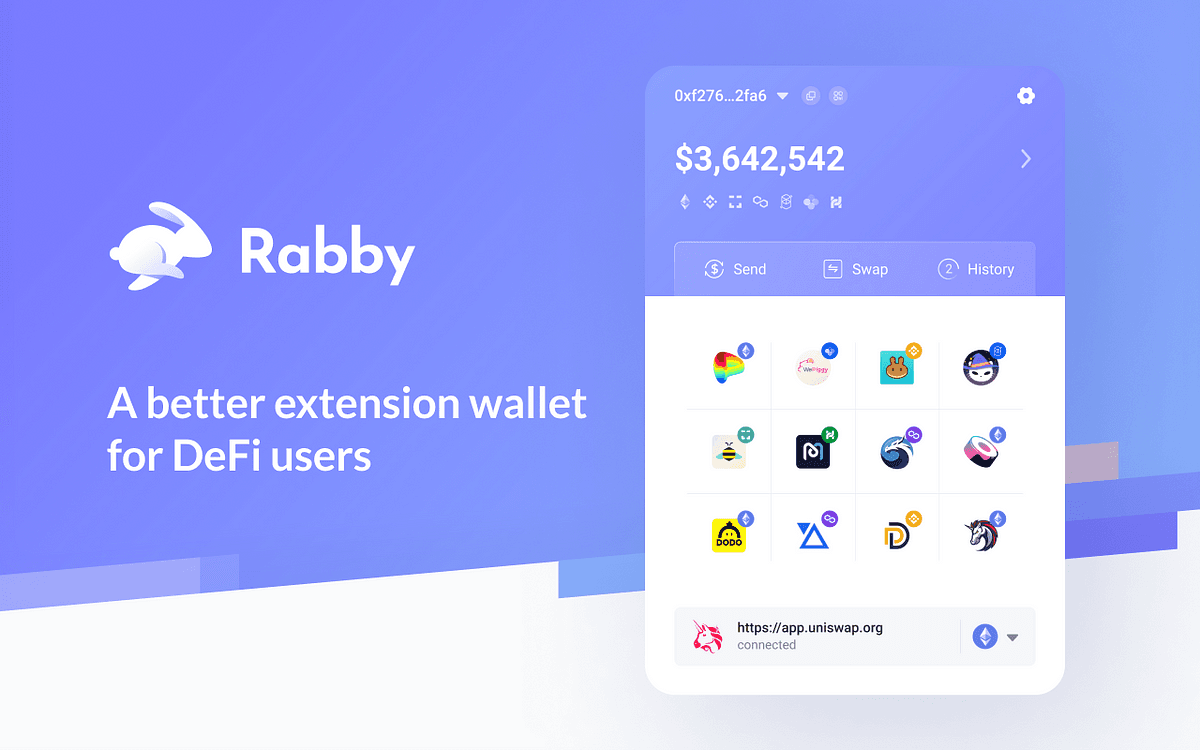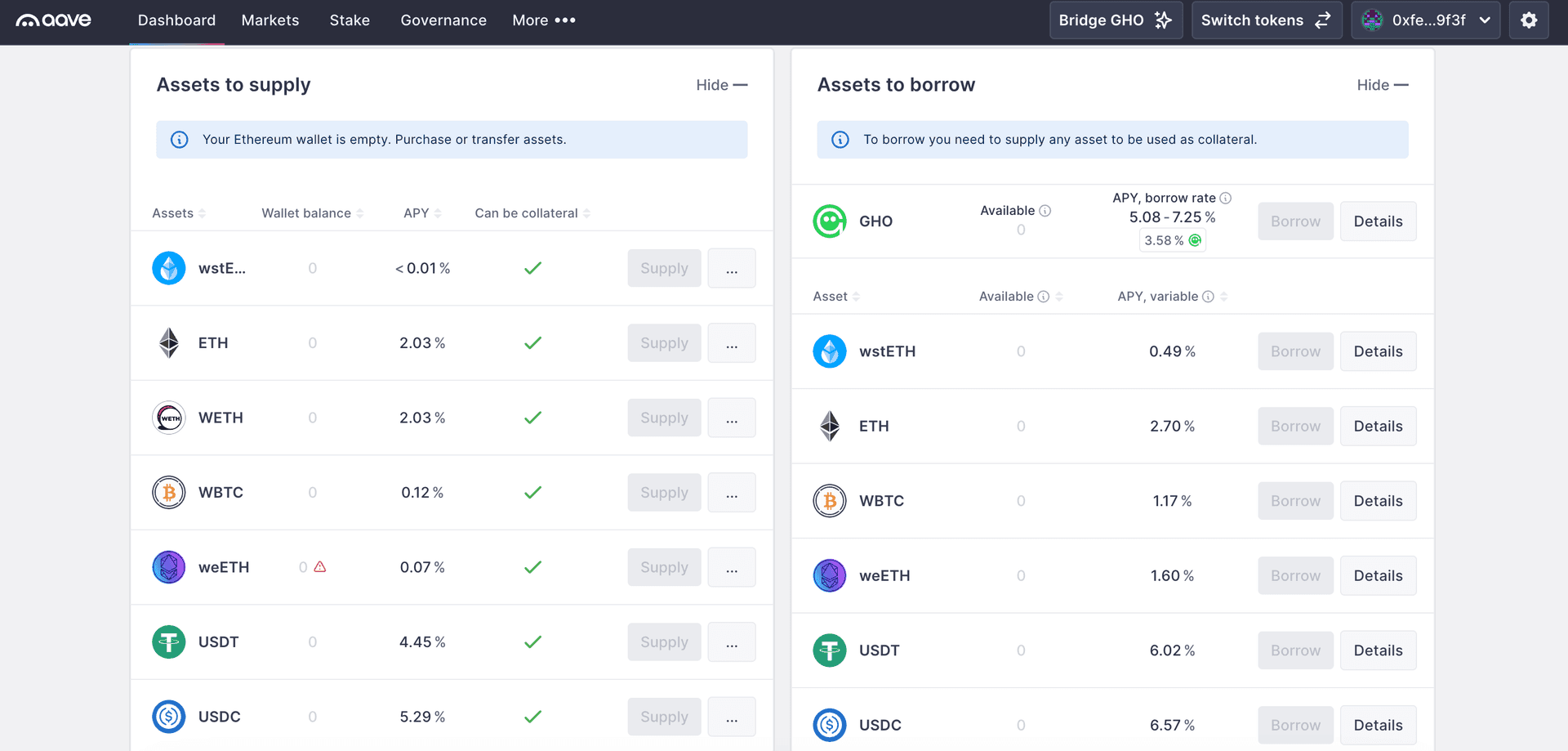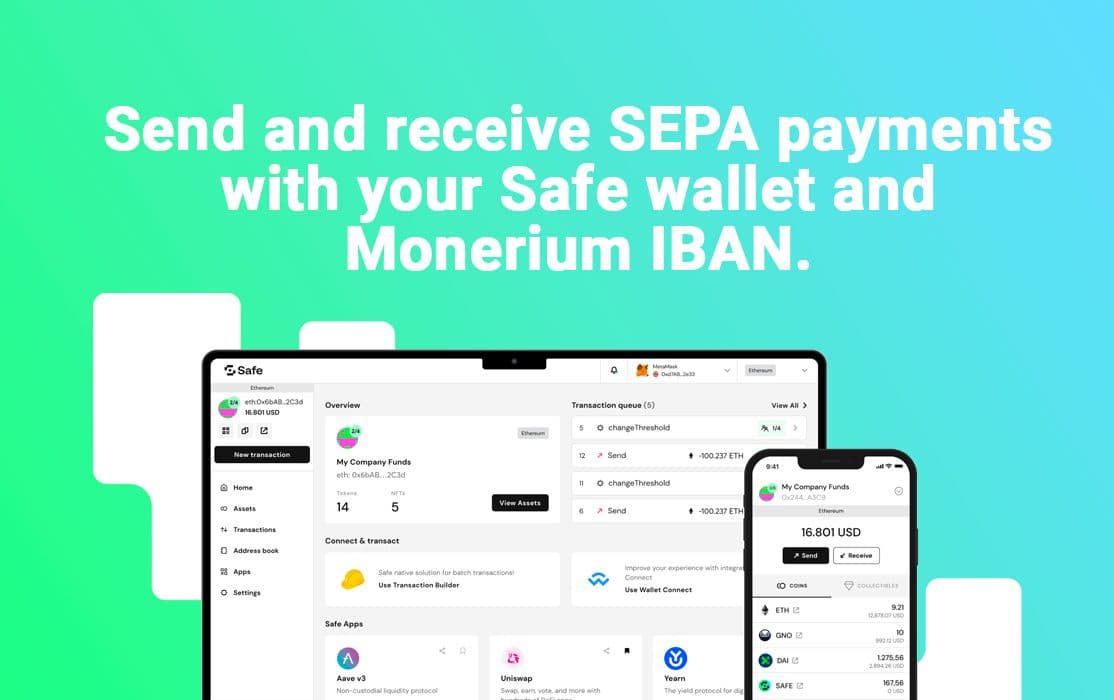Become Your Own Bank by Leveraging Blockchain
 Thomas Cosialls
Thomas CosiallsThe concept of banking is evolving rapidly nowadays. Traditional banks have long been the cornerstone of financial stability, offering a range of essential services to individuals. These services include receiving and storing money securely, providing payment options, offering loans and credit, and even enabling the growth of savings through interest-bearing accounts. However, with the advent of blockchain technology, a new paradigm is emerging that allows individuals to take control of their financial lives like never before.
Political and economic factors are driving more people to consider blockchain-based banking solutions. Are you concerned about the eventuality of CBDC digital money, increasing difficulties in sending money abroad, or the impact of inflation on your savings? If you are, learning to use decentralized financial protocols and cryptocurrencies like Bitcoin, often referred to as the new gold, can offer an alternative to increase your financial autonomy and security.
In this article, we will walk you through the entire process of becoming your own bank, from setting up your own secure digital ledger to using advanced decentralized applications (dApps) for lending, borrowing, and more. We will cover:
- Setting Up a Ledger: Learn how to securely store your digital assets with hardware wallets
- Buying Cryptocurrencies: The options you have to buy cryptos
- Choosing a Browser Wallet: Which wallet offers best security and user experience for each chain
- Opening a Gnosis Safe Account: Understand the benefits of multi-signature wallets for enhanced security.
- Utilizing Decentralized Finance (DeFi) Applications: Discover powerful dApps that allow you to lend, borrow, invest in real estate and earn interest on your assets without the need for traditional banks
- Spending your Cryptocurrencies: Explore non-custodial debit card solutions for seamless and secure payments worldwide
- Accepting Regular Bank Transfers: Learn how to attach an IBAN to your cryptocurrency wallet to accept normal Euro SEPA transfer
- Maintaining Privacy While Receiving Funds: Discover a solution that generates unique wallet address for each incoming payment
- Personal Finance and Tax Management: Use tools that help you track and manage your finances on the blockchain
By the end of this guide, you will have the knowledge and tools to take full control of your financial future using blockchain technology in a safe way! Let's go!
1. Setting Up a Secure Digital Ledger
To become your own bank, the first step is having a cocoon to securely keep your digital assets. Please read it carefully: your funds are definitely not safe in cold wallets (such as those generated by Metamask) and we do not recommend to keep your crypto assets too long on centralized exchange (remember FTX story?). Investing in a hardware wallet is essential if you want to navigate the crypto ocean with tranquility.
Why Using a Hardware Wallet?
Hardware wallets, such as Ledger and its competitors like Trezor, are essential because they keep your private keys offline, safe from hackers. Here’s why they’re great:
- Enhanced Security: Your keys are stored offline.
- User-Friendliness and Compatibility: Easy to manage multiple cryptocurrencies and use throughout several applications.
- Backup and Recovery: You can recover your private keys in case you lose access to your hardware wallet thanks to a recovery phrase (that you also need to hide and protect! Some ideas in this article)
2. Buying and Trading Cryptocurrencies
Now that you have your secure digital ledger set up, the next step is to buy / trade some cryptocurrencies. Here are a few options to consider:
Centralized Exchanges (CEXs)
Binance, Kraken or Coinbase are the most popular choices and are easily usable by almost anyone after performing a KYC (Know Your Customer). Our recommendation is to use these platforms only to buy your first crypto assets (using debit, credit cards or bank transfers) and then immediately transfer them to the wallet addresses generated by your hardware wallet.
For those who prefer to buy cryptocurrencies without going through KYC processes, a Swiss- bases company called Mt Pelerin is an excellent choice for privacy-focused purchases.
Decentralized Exchanges (DEXs)
When it comes to trading cryptocurrencies, decentralized exchanges DEXs offer several advantages over CEXs:
- Security and Control: On a DEX, you retain control of your funds. Unlike CEXs, where you need to deposit your assets into the exchange’s custody, DEXs allow you to trade directly from your wallet, reducing the risk of hacks and theft.
- Privacy: DEXs typically do not require extensive KYC (Know Your Customer) procedures, preserving your privacy and allowing you to trade anonymously.
- Accessibility: DEXs are accessible to anyone with an internet connection, without the need for account approvals or geographical restrictions.
- Transparency: Transactions on DEXs are executed on the blockchain, providing complete transparency and auditability. You can verify all transactions and trade histories independently.
Our favorite DEXs are:
- Hyperliquid: Seamless trading with low fees and high liquidity.
- dYdX: Advanced trading features such as margin trading and perpetual contracts.
- Uniswap: Automated market-making for easy token swaps with high liquidity
- 1Inch / Paraswap: They are aggregators of DEXs that allow to find the best exchanges rates
3. Downloading the Right Browser Wallet to Interact with dApps
To effectively interact with decentralized applications (dApps) like the DEXs we named above, you will need a reliable browser wallet. Here are some top options to consider:
- Rabby Wallet: User-friendly Ethereum wallet with a sleek design and great to avoid scammy transactions. Our personal best!

- Phantom Wallet: Complete and secure wallet for managing Solana assets and interacting with Solana dApps.
- Argent Wallet: Secure and user-friendly Ethereum and Starknet wallet with social recovery and DeFi integration.
- Keplr Wallet: The go-to wallet for managing and staking Cosmos assets, and interacting with Cosmos dApps.
Once installed, you can import your existing hardware wallets into your browser wallet. Your wallet will appear in the browser wallet and every time you will need to sign a transaction (like sending funds or interacting with a dApp), you will be prompted to sign with hardware wallet.
4. Enhancing Security with a Gnosis Safe Account
Using a Ledger wallet provides great security for your cryptocurrencies, but you can take it a step further by setting up a Gnosis Safe account. This smart contract-based wallet uses multi-signature functionality, requiring multiple approvals to access and transfer your funds. This added layer of security is crucial in case you lose your keys or are physically compromised.
To set up your Gnosis Safe, visit the Gnosis Safe website, connect with your browser wallet and create a new safe. You can then configure multiple owners (including trusted individuals) and set the number of required signatures for transactions. Finally, transfer your cryptocurrencies into the Gnosis Safe for enhanced protection.
By using Gnosis Safe, you ensure that your funds remain secure, even if you lose access to one key or face physical threats, making it a powerful addition to your financial security strategy.
5. Leveraging DeFi for Lending, Borrowing and Investing in Real Estate
Let's now explore an awesome application of blockchain: Decentralized Finance (DeFI). Traditional banks allow clients to access borrows and other financial products given they comply to a bunch of arbitrary rules. DeFi apps offer innovative alternatives by making access to lending and borrowing services truly permissionless. Here are some popular DeFi applications:
- Aave / Morpho / Compound: Decentralized lending platforms where you can lend and borrow various cryptocurrencies.

- MakerDAO: Allows you to create and manage Dai, a stablecoin pegged to the US dollar. By depositing collateral in the form of Ethereum or other supported assets, you can borrow Dai, which can be used for transactions or further investment.
- RealT: a platform that allows you to invest in tokenized real estate properties. By purchasing RealTokens, you can own fractional shares of real estate assets, earning rental income weekly and benefiting from property appreciation.

- Ondo Finance: USDY is a yield-bearing stablecoin offered by Ondo Finance. It provides users with a stable asset that earns interest over time (more than 5% currently), combining the stability of traditional stablecoins with the benefits of DeFi yield generation.
By leveraging these DeFi products, you can access a new world of financial opportunities, allowing you to lend and borrow without the need for traditional banks. This not only provides greater autonomy but also often better terms and flexibility.
6. Spending Cryptocurrencies with Non-Custodial Debit Cards
Once you've secured your cryptocurrencies and made some profits with smart DeFi moves, you'll want to spend them easily. Just as traditional banks provide clients with bank accounts and numbers for transactions, blockchain technology offers innovative solutions for seamless fund transfers. Two excellent non-custodial options are Gnosis Pay and Holyheld:
- Gnosis Pay: Provides a non-custodial Visa debit card that lets you spend your cryptocurrencies directly from your wallet. This means you retain full control over your assets while enjoying the convenience of a traditional debit card.
- Holyheld: Offers another fantastic non-custodial Mastercard debit card solution. You can spend your cryptocurrencies at any merchant that accepts debit cards, both online and offline. Holyheld ensures that your funds are safe by keeping them in your wallet until you make a transaction, providing both security and convenience.
By using these non-custodial credit and debit card options, you can spend your cryptocurrencies just like traditional money, enjoying the flexibility and security of blockchain technology without sacrificing convenience.
7. (Bonus for EU citizens): Accepting SEPA Transfers with Monerium

Just as traditional banks provide clients with bank accounts and numbers for transactions, blockchain technology offers innovative solutions for seamless money transfers. Monerium is one such solution that allows you to accept SEPA transfers in Europe using EURe stablecoin.
Monerium bridges traditional banking and blockchain by enabling seamless SEPA transfers in euros. With Monerium, you can receive a Web3 IBAN, allowing you to accept euros via SEPA transfers, which are automatically converted into EURe tokens onchain. You can also send euros from your wallet directly to any SEPA-compatible bank account, making it easy to manage fiat and crypto seamlessly.
8. Receive Funds While Maintaining Privacy with Fluidkey
In addition to being able to receive funds from any crypto and non crypto users, maintaining privacy when receiving funds is crucial. Indeed, with blockchain, anyone can see the full transaction history of any wallet. Fluidkey offers an excellent solution for this.
Fluidkey is a platform designed to keep your identity private when receiving funds. It works by assigning you a unique Fluidkey address to share with senders. When someone sends funds to your Fluidkey address, the transaction is routed through Fluidkey’s secure system, converting the payment into a private and untraceable format before reaching your actual wallet. This process ensures your personal information remains protected.
9. Managing Finances and Reporting Taxes
To effectively become your own bank, it’s important to have tools for tracking your finances and reporting taxes accurately. Here are two excellent options:
- Finary: Finary helps you track all your investments in one place, including cryptocurrencies, stocks, real estate, and more. It provides real-time insights and detailed reports, making it easier to manage your portfolio and stay on top of your finances.
- CoinTracker: CoinTracker simplifies cryptocurrency tax reporting by tracking your crypto transactions across multiple wallets and exchanges. It automatically calculates your gains, losses, and tax liabilities, ensuring you comply with tax regulations.
Using these tools, you can efficiently manage your financial assets and meet tax obligations, solidifying your position as your own bank.
Conclusion
Becoming your own bank using blockchain technology empowers you with financial autonomy and security. By setting up a secure ledger, leveraging DeFi for lending and borrowing, using privacy-focused tools like Fluidkey, accepting SEPA transfers with Monerium, and tracking your finances with tools like Finary and CoinTracker, you can effectively manage your assets independently. Don't be afraid to embrace these innovative solutions to enhance your financial control and navigate the evolving digital landscape with confidence!

